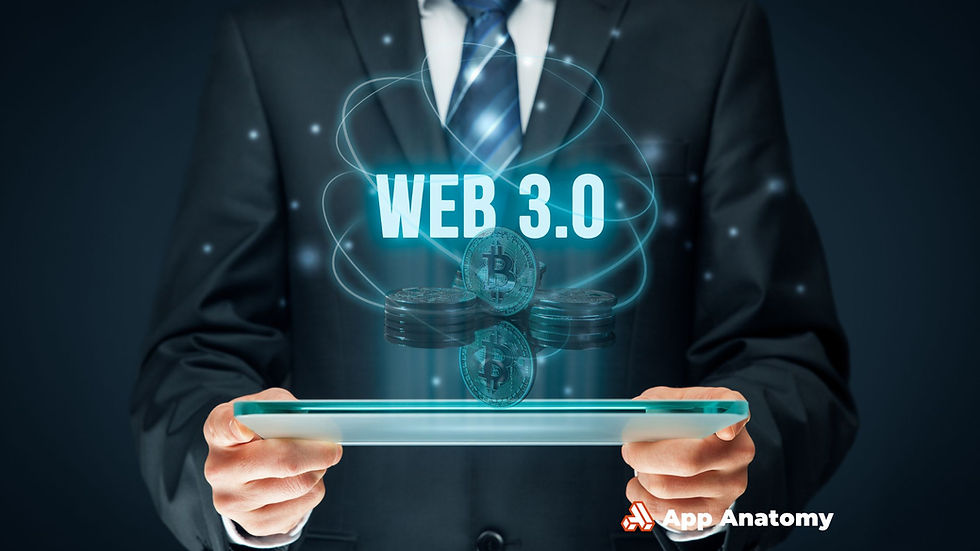Governance in Blockchain: How Decentralized Networks Make Decisions
- Jun 17
- 4 min read

When there’s no CEO, no boardroom, and no formal institution calling the shots, who decides what happens next in a blockchain? That’s where governance steps in.
In the world of decentralized networks, governance refers to how decisions are made, from technical upgrades and bug fixes to community policies and funding allocation. It’s the invisible framework that keeps things moving, evolving, and hopefully not falling apart.
Without effective governance, a blockchain risks stagnation, internal conflict, or even collapse. With it, it can adapt, grow, and stay true to its mission, whatever that may be.
What You Will Learn In This Article
What blockchain governance means and why it’s essential for decentralized systems
The differences between on-chain, off-chain, and hybrid governance models
How major blockchain projects like Tezos, Polkadot, and Bitcoin manage decisions
The key benefits and challenges of decentralized decision-making
Why voter apathy and whale dominance threaten fair governance
How DAOs and new voting models aim to build more inclusive governance systems
The Main Governance Models: Who Gets a Say?
On-Chain Governance: Voting by Code
On-chain governance puts decision-making directly on the blockchain itself. Proposals are submitted as code, and token holders vote, often using their crypto holdings to determine influence. The results are binding and usually automated.
Examples:
Tezos allows its community to propose and approve upgrades directly on-chain.
Polkadot uses a system of referenda and council votes to steer development.
Pros:
Transparent, automated, and enforceable.
Reduces ambiguity around decisions.
Cons:
Can be overly influenced by wealthy participants.
Sometimes too rigid or technical for broader community engagement.
Off-Chain Governance: Decisions in the Community
Off-chain governance happens in forums, developer calls, and GitHub threads, outside the blockchain itself. It’s more informal and often relies on community consensus.
Examples:
Bitcoin Improvement Proposals (BIPs) and Ethereum Improvement Proposals (EIPs) are discussed and debated before implementation.
Community members, core developers, and ecosystem stakeholders all play roles in shaping decisions.
Pros:
Flexible and open to debate.
Allows for more nuanced discussions.
Cons:
Slower and less transparent.
Can lack clear resolution or enforcement mechanisms.
Hybrid Models: Mixing Code and Conversation
Some projects combine both worlds, on-chain execution backed by off-chain deliberation.
Example:
MakerDAO uses off-chain governance forums and calls to discuss proposals, followed by on-chain votes using the MKR token.
This hybrid approach aims to balance efficiency with inclusivity, giving communities both voice and structure.
Why Governance Matters (More Than You Think)
Governance isn’t just some abstract concept for devs to argue about, it’s the engine behind everything a blockchain does (or doesn’t do).
1. Long-Term Sustainability
A well-governed blockchain can evolve over time, updating code, responding to user needs, and staying secure. Poor governance? It means outdated protocols, unresolved bugs, and missed opportunities.
2. Handling Conflicts and Upgrades
Disagreements are inevitable. Whether it’s how to scale, handle bugs, or respond to external threats, governance provides a path toward resolution, ideally before things get messy.
3. Decentralization in Action
True decentralization isn’t just about removing middlemen, it’s about distributing power. Governance lets communities participate, shape direction, and hold developers accountable.
The Messy Part: Governance Isn’t Easy
Ironically, many token holders don’t vote, even when they can. This apathy means a small group of active participants often steers the ship, sometimes against the broader community’s interest.
Whale Dominance
In systems where voting power is tied to token holdings, the rich get louder. Large stakeholders (aka whales) can dominate votes, swaying decisions in their favor.
Slow and Fractured Decision-Making
Democracy is messy. Decentralized governance often means long debates, slow rollouts, and difficulty reaching consensus, especially in diverse communities.
And when a network fails to reach agreement? That’s when forks happen, but that’s a topic for another article.
What’s Next for Blockchain Governance?
As the ecosystem matures, so do governance models. Several trends are reshaping how decisions get made:
DAOs: Governance on Autopilot?
Decentralized Autonomous Organizations (DAOs) are blockchain-native entities governed entirely by smart contracts and community votes. Think of them as digital co-ops where every member can propose and vote on changes.
DAOs are powering everything from DeFi protocols to NFT communities, but they’re still figuring out how to balance efficiency with fairness.
Fairer Voting and Token Models
Innovators are experimenting with:
Quadratic voting (reducing whale influence)
Reputation-based voting (influencing power based on contribution, not wealth)
Delegation models (where users can assign votes to trusted experts)
These new systems aim to make governance more inclusive and intelligent, not just louder and richer.
Governance Is the Glue
Without governance, blockchain is just code. With governance, it’s a living ecosystem, one that adapts, grows, and includes its users in the process.
The way we govern blockchains today will shape how the technology serves us tomorrow.
Will decentralized governance finally deliver on the promise of true community control? Or will it end up mirroring the same power struggles we were trying to escape?
One thing’s for sure: if blockchain is the future, governance is what gets us there, one vote, one proposal, one hard debate at a time.





Comments